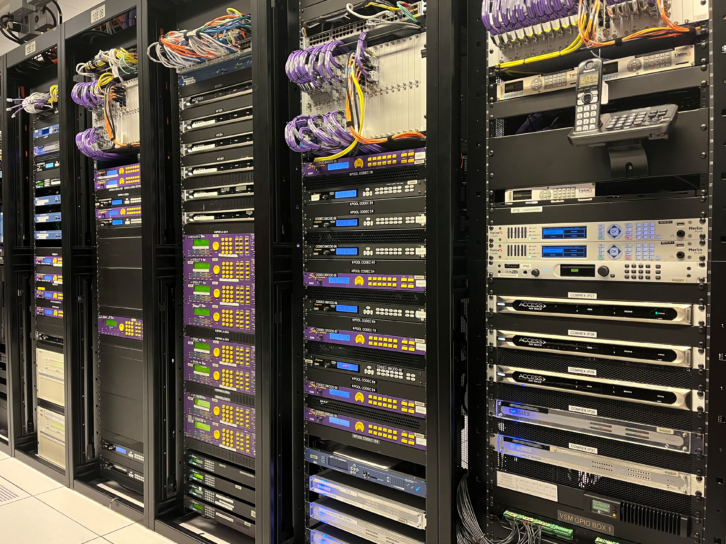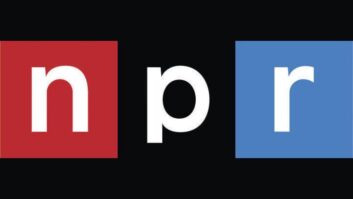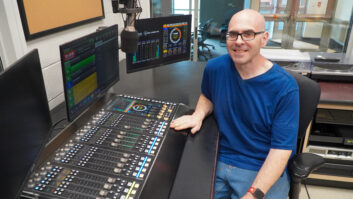NPR is one of the most recognizable news brands in the United States. The independent, nonprofit media organization daily “connects with millions of Americans on the air, online and in person to explore the news, ideas and what it means to be human.” Its headquarters is in Washington and it has a major West Coast presence in Culver City, Calif.
For Radio World’s recent ebook on remote contribution, Audio Engineer Natasha Branch and Technical Director of Master Control Michael Cullen took our questions.
RW: What is NPR’s primary forms of remote contribution and how do you accomplish them?

Natasha Branch: Before the onset of the pandemic, our remote contributors were overwhelmingly correspondents or guests on location. But over the past couple of years, most of our newsmagazine hosts and newscast anchors have worked almost exclusively from home.
Several of them have returned to NPR headquarters for broadcasts [as of May 2022], but many of them continue to use IP audio codecs to connect to our studios for preproduction and live shows.
Meanwhile, our correspondents are using a combination of IP audio codec hardware, AoIP mobile applications and fixed fiber paths for remote connectivity. We have also seen a massive increase in the use of consumer applications, including FaceTime, Zoom and WhatsApp, to reach domestic and international guests.
Though we have moved almost entirely away from ISDN, I should mention we still occasionally use it to accommodate contributors at NPR Member Stations and other public and private institutions.

RW: How has the pandemic changed the way the organization views remote contribution?
Michael Cullen: Reporters are doing more live remote interviews with hosts than ever before, mostly from home. Many NPR reporters have IP codec hardware at home, but many do not. Reporters without codec hardware mostly use Tieline Report-IT Live on a smartphone with an external preamp that accommodates a professional microphone. Remote guests are using FaceTime, WhatsApp, Skype, Report-IT Live or Zoom to connect.
Many producers now say, “If a guest can download and operate an app on their smartphone, why should we book a studio for them?” Convenience and expediency are the top priorities for remote contribution. Guests are booked very close to their live interviews. Often there isn’t time to reserve a facility, have the guest travel there and establish a contribution-quality connection. Using AoIP mobile apps for live interviews is now the norm.
RW: Are there particular products that play a key role?
Branch: We rely heavily on a handful of broadcast hardware and applications for the vast majority of our daily production workflow. We have a pool of IP and ISDN codecs from Comrex, Tieline, Telos, Prodys and WorldCast Systems, and we assign units to remote hosts, news anchors, correspondents and guests to connect to throughout the day. We then use Lawo’s VSM and LineScheduler applications to route the audio output of our codecs to our in-house facilities, remote bureaus and Member Stations.
We also use LineScheduler to route remote IP codecs to a pool of software recorders. This allows production staff to edit interviews being done outside of our facilities in real time. It also simplifies workflow for our hosts because they do not have to record themselves locally and upload files to our server for pre-produced interviews that are not routed through our studios.

RW: Is there something you wish manufacturers would add or make more widely available?
Cullen: The ability to log in to a remote hardware codec that only has a private DHCP IP address and upgrade firmware, change settings or take over operation to get an inexperienced user out of trouble.
Branch: Tieline facilitates basic remote control of Report-IT Live via Cloud Codec Controller. We can connect and disconnect online guests, adjust input and return levels, and monitor incoming and outgoing connections in a single window.
Additionally, Report-IT Live automatically saves a high-quality local recording on the remote user’s device that they can upload to us if necessary. This is invaluable because streamed audio may be impaired by dropouts or data compression due to limited bandwidth, and we regularly work with users who may not have the equipment or expertise necessary to record themselves.
[Sign Up for Radio World’s SmartBrief Newsletter]
RW: What do users need to know these days about cross-product compatibility and standards compliance?
Cullen: Interoperable equals impractical, given the complexities of implementing SIP for IP audio transport. Audio coding choices under SIP vary from manufacturer to manufacturer. The quality of G.722, the most common audio coding choice with SIP, is adequate at best.
A manufacturer’s representative once gave me this advice: “If you want to talk to someone with a Comrex, buy a Comrex. If you want to talk to someone with a Tieline, buy a Tieline. If you want to talk to someone with a Telos Z/IP One, buy a Z/IP One,” et cetera.
NPR has purchased IP audio codecs from multiple vendors. We can connect natively with most remote users. This is an impractical solution for NPR Member Stations.
RW: What technical features of a codec stand out as notable recent additions?
Branch: Now that so much of our live content originates outside our facilities, reliable connectivity is paramount. When available, I recommend hardware and applications that allow users to connect to the internet with multiple connections, such as a cellular modem and wired Ethernet, simultaneously.
Cullen: Tieline’s SmartStreamPlus with Report-IT Live and Comrex’s CrossLock with Comrex hardware codecs offer redundancy and increased reliability for live remote connections. Both are invaluable and have saved many a live reporter contribution. Would-be purchasers should choose a product that offers redundancy and increased reliability and be sure to implement it.
RW: What other questions or concepts should a manager be thinking about when purchasing?
Cullen: Who is going to be using the device in the field? Non-technical users will need training. How will you connect your IP codec to the internet at the remote location? At many venues, wired Ethernet is not available. Joining IP codecs to a Wi-Fi network can be fiddly. Venue networks may implement security measures that keep IP codecs from accessing the internet. Cellular networks may become overloaded during events with many attendees.






